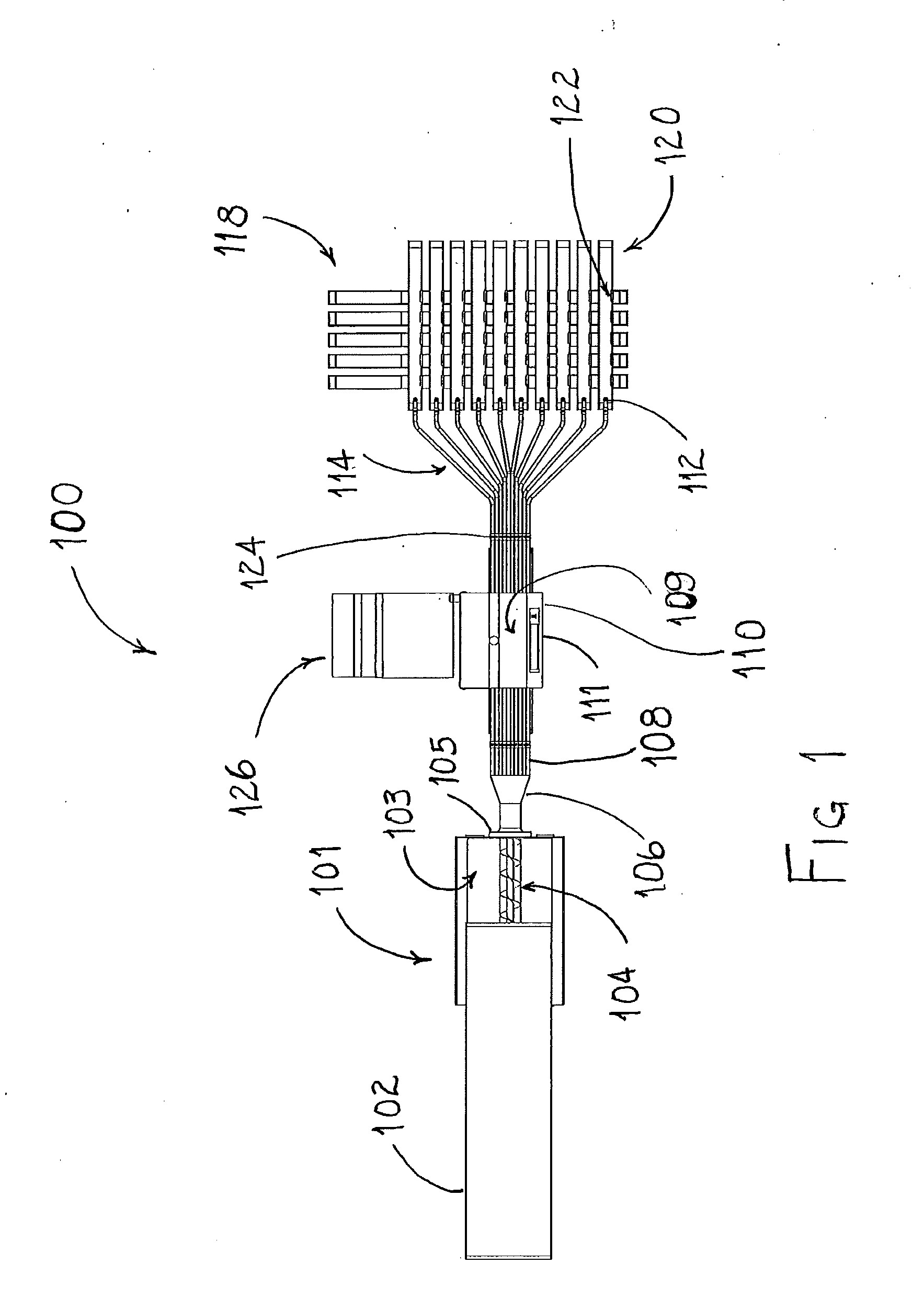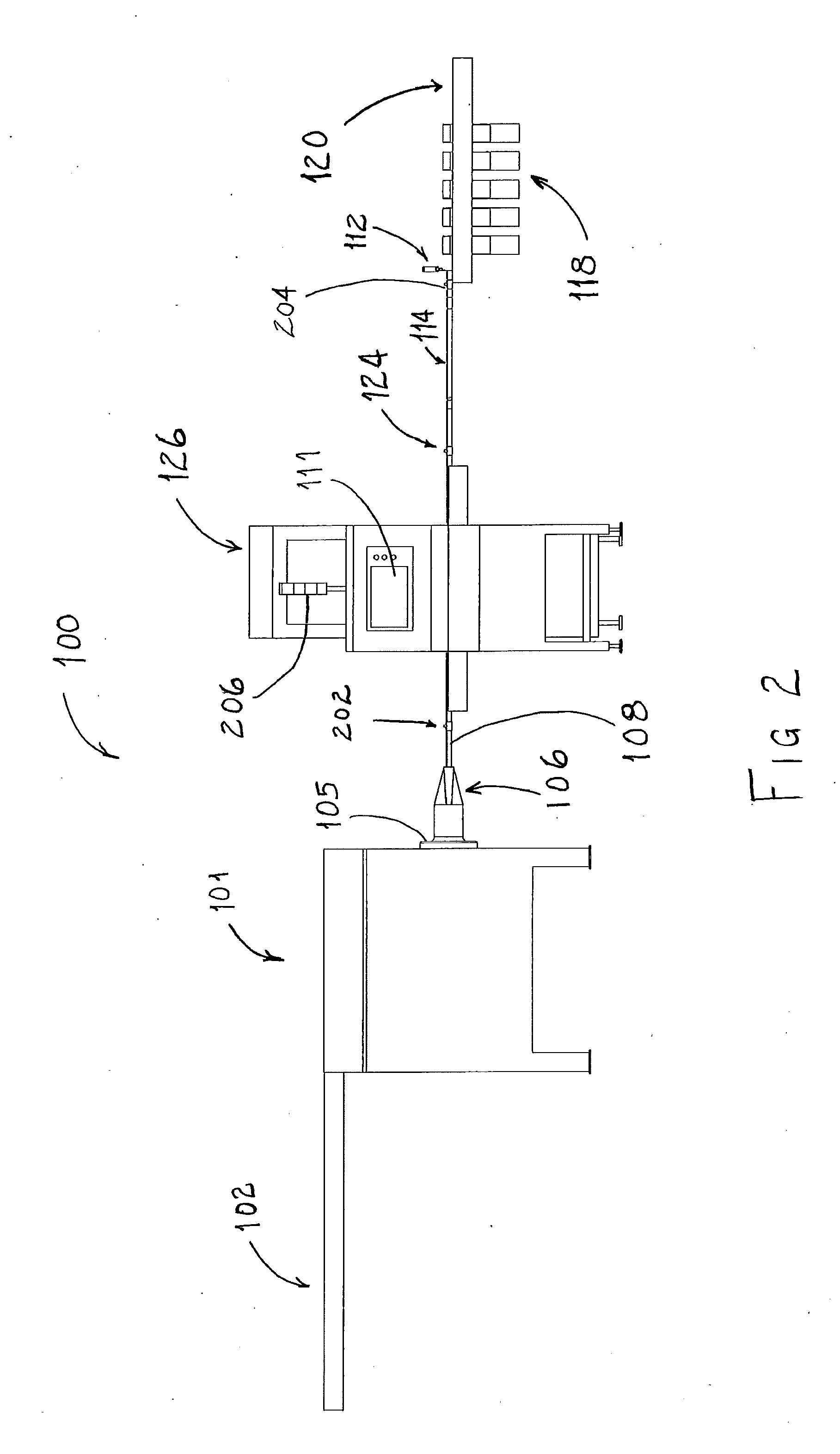System and method for lean recovery using non invasive sensors
a sensor and lean recovery technology, applied in the field of lean recovery, can solve the problems of ineffective process, inability to recover any further lower fat lean portions from trimmings, and ineffective manually cutting away the more fatty portion from the more lean portion
- Summary
- Abstract
- Description
- Claims
- Application Information
AI Technical Summary
Benefits of technology
Problems solved by technology
Method used
Image
Examples
Embodiment Construction
[0047]According to the embodiment(s) of the present invention, various views are illustrated in FIG. 1-13 and like reference numerals are being used consistently throughout to refer to like and corresponding parts of the invention for all of the various views and figures of the drawing. Also, please note that the first digit(s) of the reference number for a given item or part of the invention should correspond to the Fig. number in which the item or part is first identified. Further, this application incorporates by reference in its entirety, application Ser. No. 12 / 856,574 filed Aug. 13, 2010 entitled System and Method For Lean Recovery Using Non-Invasive Sensors.
[0048]One embodiment of the present invention comprising a grinder, conveyor, and cutter teaches a novel apparatus and method for recovering and segregating lean from sparse lean product based on percent fat content. Sparse lean product or trim can be accumulated trim in an auger / grinder. The grinder can be equipped with r...
PUM
| Property | Measurement | Unit |
|---|---|---|
| temperature | aaaaa | aaaaa |
| length | aaaaa | aaaaa |
| length | aaaaa | aaaaa |
Abstract
Description
Claims
Application Information
 Login to View More
Login to View More - R&D
- Intellectual Property
- Life Sciences
- Materials
- Tech Scout
- Unparalleled Data Quality
- Higher Quality Content
- 60% Fewer Hallucinations
Browse by: Latest US Patents, China's latest patents, Technical Efficacy Thesaurus, Application Domain, Technology Topic, Popular Technical Reports.
© 2025 PatSnap. All rights reserved.Legal|Privacy policy|Modern Slavery Act Transparency Statement|Sitemap|About US| Contact US: help@patsnap.com



